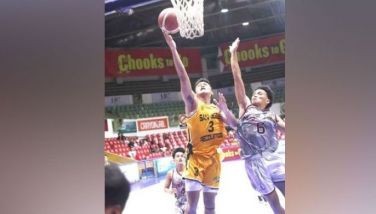Residency 101
And so we have reached this ugly point. Residency. Somehow, this word has reared its ugly side in the sports world, from the UAAP to our very own CESAFI.
Residency is a term used in the sports world when referring to a time frame or period when one establishes just that: “Residency†in a team that he or she just joined after coming from another team. It means that he or she has “stayed†or “lived†or “resided†in the team to which he or she transferred. It’s also used in sports tournaments of the corporate world, inter-barangay, inter–city/town where teams require that their players establish a residency of a given period as agreed by the tournament’s organizers and board of teams.
In the CESAFI, the two year residency rule for all teams (college and high school) was approved by the CESAFI Board of Trustees at a board meeting in March 2012. And who are they? The members of the Board are either the school Presidents or owners themselves. To simplify it, the rule stated that any CESAFI player who transfers from one CESAFI school to another would have to serve a two year residency before he or she could play. As an implementing guideline, this would be effective the season 2012-2013. Thus, all players who transferred to schools in 2012-2013 would be affected by this rule. Those who transferred before 2012-2013 would not be affected by this new rule but they still had to follow the previous residency rule that called for one year of residency. Moreover, CESAFI clarified that residency also meant the time that one spent away from the league, whether he/she be enrolled in a non-CESAFI school or simply stayed out of school for one reason or another. The only exceptions to this rule were if one graduated from high school or college and wished to enrol in another CESAFI school. The other exception is if the team from one’s previous school was disbanded.
These revised rules were discussed with all coaches, athletic directors and some members of the media at the coaches meeting for the season 2012-2013 or roughly a year ago. This was made clear and everyone was given the opportunity to ask, question or clarify how this would be implemented. Sample and theoretical situations were discussed to give everyone a clear reading on the rule. Similar cases in the past were presented, with the Jade Dionson transfer being the most “highlighted.†Dionson was a volleyball player who transferred from USPF to USJR. He played for USPF in one season, then stopped studying for two years. He then transferred to USJ-R. Was Dionson allowed to play? Yes; on the grounds that he sat out two full seasons that also served as his required residency, even if he didn’t study in USJR for the two years that he left USPF. At the end of the day, the big idea is that if a CESAFI player transferred from one CESAFI school to another CESAFI school, he or she can’t play in the CESAFI for two years or seasons, regardless of where he or she stayed or studied during these two years. It was one of those interesting meetings that was productive, intense and which brought out the curiosity of all. After all, a new rule had to be scrutinized to be sure that this wasn’t broken and that all followed it. Those who decided to be absent from this meeting waived their right to listen, question and learn more about the new rules.
Another twist about the residency rule, however, is that it can be circumvented or “short cutted.†Let’s set a hypothetical example: Player X played “shatong†for CESAFI School A in Season 1. She then transferred to a non-CESAFI School B for Season 2. She then enrolled in CESAFI School C to play “shatong†in Season 3. Can she play in Season 3? She cannot play in Season 3 since she has to serve two years of residency. Her first year of residency was during Season 2 even if she was not enrolled in School C. Her second year of residency would be Season 3. She can then play “shatong†for School C in Season 4, assuming of course that she was still enrolled in School C.
But why oh why has it gotten this far? Why are we making things more complicated? I manage the Cebu Youth Basketball League, the BEST SBP Passerelle Twin Tournament, Milo Little Olympics basketball events and am also with the Cebu Football Association. And now I’m wary that the rules of all these leagues may now be questioned. The FIBA and FIFA now allow naturalized citizens to play for national teams outside of their mother country. Will this be questioned now? Some leagues do not have residency rules. Will this now be a subject for a legal battle? The three-second violation has been a rule for as long as I can remember. I wonder if someone will now raise this up as illegal or against the law? The red card in football is the most feared card. Will it now be a thing of the past after it’s questioned?
On the brighter side, all this shows that the Cebu sports scene is very much alive and kicking. It’s all part of the territory. It’s just sad that the noble, professional and generous school owners and school heads who have provided the venue for school-based sports to thrive, are now being questioned. But I’m confident that there’s a reason behind all this. As a sports community, we’ll all come out stronger in the end.
***
Time-out: Calling on all to pray for peace in Zamboanga and all other hot spots of the world. >>> You can reach me at [email protected].
- Latest






















